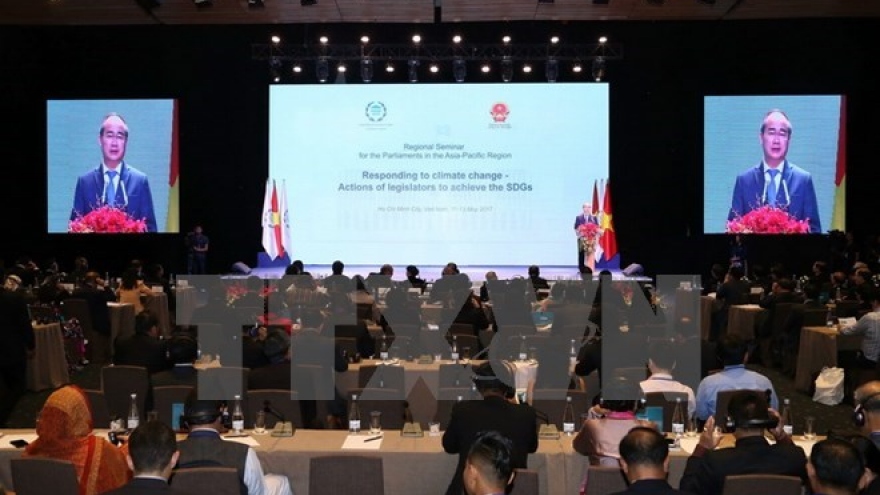Asia-Pacific expected to contribute 70% of global GDP by 2050
As a powerhouse of new technologies, skilled workforce and burgeoning middle class, the Asia-Pacific region is expected to contribute 70% of the global GDP by 2050 and now 10 out of the 20 largest economies are from the region, said a high-ranking Vietnamese official.
 |
Asia-Pacific is the only region that has not suffered from a single armed conflict since the end of the Cold War. When PECC was established in 1980, the region accounted for over 40 percent of the global GDP and has now risen to over 50 percent. Over one billion people in the region have been lifted out of extreme poverty, Minh noted.
The Deputy PM affirmed that the region is a testament to the shared prosperity that can be gained through deeper economic integration and cooperation and more open trade and investment. So it would not be an exageration to project that the 21st century is an “Asia-Pacific century”.
However, Minh also pointed out three “baskets” of immediate and long-term challenges facing the region such as sluggish productivity, rising inequality within and among economies; the fourth Industrial Revolution, and the lingering risks of geopolitical conflicts and the lack of a responsive regional governance.
PECC, as a pioneer for new ideas on trade, investment, growth and integration, has been taking a leading role in charting a vision for the region, he said, expressing his hope that at this meeting, delegates would share insights and perspectives on major components of a vision for the region.
The recommendations and insights proposed at this meeting are important to APEC’s process of reflection on its work toward 2020 and beyond and “creating new dynamism, fostering a shared future” which is the overarching theme of APEC 2017, he stressed.
During the course of the meeting, delegates from 21 APEC member economies are scheduled to focus discussions on important achievements and growth prospects of the Asia-Pacific region.
They will also touch upon issues regarding new driving forces for economic growth and connectivity as well as the Asia-Pacific agenda on the digital economy/internet economy and the prospects of the Asia-Pacific partnership.




